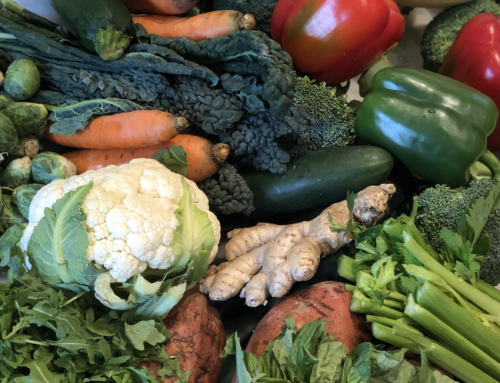Just as the seasons change, your body’s needs change with the seasons. Your immune system demands more during this time of year, and eating in tandem with what Mother Nature naturally provides can keep you feeling in top form—even if you’ve historically gotten sick when the temperature plummets.
The Seasonal Connection
It appears that Mother Nature may know best. During the different seasons, not only are your nutritional needs different, foods affiliated with a particular season affect your body quite differently.
During the cold winter months, root veggies such as carrots, sweet potatoes, turnips, rutabagas, and beets are warming to your system and take longer to digest, which help insulate you from the inside out. Foods typically grown in the summer (think: melons, berries, tomatoes, and peaches) are naturally moist and cooling during a season that is usually hot and dry, helping you regulate your temperature. Note how during the winter months, you likely crave warm root vegetable and meat stews while during the summer, you gravitate towards salads and other light, easy-to-digest foods.
Ecologists consider the seasons to be a source of natural diversity. Changes in growing conditions from fall to winter or spring to summer are considered essential for balancing the earth’s resources and its life forms—that includes you! But today, it’s so easy to forget about seasons when you eat. This is because modern food processing and widespread distribution makes distinctly seasonal foods such as strawberries available year-round; grocery stores shelves look much the same in December as they do in July.
Get Your Vitamin C When It Matters!
Indeed, a study out of Japan shows that growing a food out of season also affects its nutritional value. Evidence bore out that spinach harvested in winter verses summer had considerably more vitamin C. It just so happens that winter is a time that your immune system needs the vitamin C boost. That’s by design!
To enjoy the immune-boosting qualities of your food, you’ll want to make your menu a seasonal one. Depending on where you live, seasonal menus can vary. But here are some general guidelines you can follow to ensure optimal nourishment in every season:
- In fall, turn to more warming, autumn harvest foods, such as onions, garlic, carrot, and sweet potatoes. Apples are particularly cleansing in the fall months. Also liberally use more warming spices such as ginger, peppercorns, and mustard seeds.
- In winter, focus even more exclusively on consuming warming foods. (Here’s an easy principle for gauging if a food has “warming” qualities or “cooling” qualities: foods that take longer to grow are generally more warming than those that grow quickly.) Root vegetables are especially warming, as are animal protein such as fish, chicken, beef, and lamb. In addition, corn, nuts, and eggs are all warming.
- In spring, consume the tender, leafy veggies that represent the fresh new growth of this season. The greening that occurs in springtime should be represented by greens on your plate, including Swiss chard, Romaine lettuce, fresh parsley, and basil.
- In summer, stick with light, cooling foods recommended in traditional Chinese medicine. These foods include strawberries, apples, pears, plums, summer squash, broccoli, cauliflower, peppermint, and cilantro.
Mother Nature’s Winter RX
Indeed, as the external conditions turn windy, dry, and cold, so do your internal conditions, which means that stable patterns, paired with moist and warm foods will naturally nourish you.
Focus on the following tips to remain balanced and boost your immunity into the winter:
- Eat warm, cooked foods (think: soups, stews, porridge, casseroles).
- Add healthy fat to your diet (i.e.: wild salmon, organic chicken, cashews, olive oil).
- Establish regular routines (i.e.: rising, eating, and going to bed on a set schedule).
In all seasons, be creative! Let the natural backdrop of fall, winter, spring, and summer be your guide.






